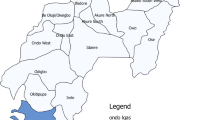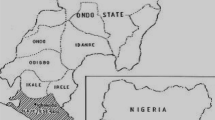Abstract
Ganga River, life line of millions of people got heavily polluted due to uncontrolled anthropogenic activities. To monitor the effect of pollution of the river on its aquatic life, a field study was conducted by analyzing the different biomarker enzymes and biochemical parameters in the various tissues (muscles, liver, gills, kidney, brain, and skin) of the Indian major carp Labeo rohita collected from the River Ganga from different study sites of Varanasi district. Activities of antioxidant enzymes, e.g., superoxide dismutase, catalase, and level of lipid peroxidation were found to be higher in the fish collected from the river showing pollutant-induced oxidative stress in the fish. Disturbed health status of the river fish was also manifested by increased activities of aspartate amino transferase, alanine amino transferase, and alkaline phosphatase. Concentration of nutritionally important biomolecules (proteins, lipids, and moisture) and energy value were also found to be significantly lower in the tissues of the River fish indicating its decreased nutritional value due to oxidative stress caused by different pollutants.






Similar content being viewed by others
References
Aebi, H. (1984). Catalase in vitro, in: Colowick, SP and Kaplane NO (Eds.). Methods in Enzymology, 105, 121–127.
Atli, G., & Canli, M. (2010). Response of antioxidant system of fresh water fish Oreochromis niloticus to acute and chronic metal (Cd, Cu, Cr, Zn, Fe) exposures. Ecotoxicology and Environmental Safety, 73, 1884–1889.
Bergmeyer, H. U. (1956). ). Methods for enzymatic analysis. Second printing revised (pp. 779-787–837-853). New york and London: Verlag chemie GMBH Wein Heim/Bergster Acadmic press.
Das, K., Samanta, L., & Chainy, G. B. N. (2000). A modified spectrophotometric assay of superoxide dismutase using nitrite formation of superoxide radicals. Indian Journal of Biochemistry & Biophysics, 37, 201–204.
Dhaneesh, K.V., Noushad, K.M., & Ajith, K.T.T (2012) Nutritional evaluation of commercially important fish species of Lakshadweep archipelago, India PloS One, 7, 9, e45439. doi:10.1371/journal.pone.0045439.
FAO (1983). Compilation of legal limits for hazardous substances in fish and fishery products. Food Agric Organ Fish Circ, No. 464.
Folch, J. L., & Sloane-Stanley, G. H. (1957). A simple method for isolation and purification of total lipids from animal tissues. Journal of Biological Chemistry, 326, 497.
Farombi, E. O., Adelowo, O. A., & Ajimoko, Y. R. (2007). Biomarkers of oxidative stress and heavy metal levels as indicators of environmental pollution in African cat fish (Clarias gariepinus) from Nigeria Ogun River. International Journal of Environmental Research and Public Health, 4, 158–165.
Gabriel, U. U., Obomanu, F. G., & Edori, O. S. (2009). Haematology, plasma enzymes and organ indices of Clarius gariepinus after intramuscular injection with aqueous leaves extracts of Lepidagathis alopecuroides. African Journal of Biochemistry Research, 3, 312–316.
Gupta, A., Rai, D., Pandey, R., & Sharma, B. (2009). Analysis of some heavy metals in the riverine water, sediments and fish from river Ganges at Allahabad. Environmental Monitoring and Assessment, 157, 449–458.
Jabeen, F., & Chaudhry, A. S. (2011). Chemical compositions and fatty acid profiles of three freshwater fish species. Food Chemistry, 125, 991–996.
Karan, V., Vitotovic, S., Tutundzic, V., & Poleksic, V. (1998). Functional enzymes activity and gill histology of carp after copper sulfate exposure and recovery. Ecotoxicology and Environmental Safety, 40, 49–55.
Lowry, O. H., Rosenbrough, N. G., Farr, A. L., & Randall, R. G. (1951). Protein measurements with folin phenol reagent. Journal of Biological Chemistry, 193, 265–275.
Liebel, S., Oliveira Ribeiro, C. A., Silva, R. C., Ramsdorf, W. A., Cestari, M. M., Magalhães, V. F., et al. (2011). Cellular responses of Prochilodus lineatus hepatocytes after cylindrospermopsin exposure. Toxicology In Vitro, 25, 1493–1500.
Onyeike, E. N., Ayoologu, E. O., & Ibegbulam, C. O. (2000). Evaluation of the nutritional value of some crude oil in polluted freshwater fishes. Global Journal of Pure and Applied Sciences, 6, 227–233.
Ohkawa, H., Ohishi, N., & Yagi, K. (1979). Assay for lipid peroxides in animal tissues by thiobarbutric acid reaction. Analytical Biochemistry, 95, 351–358.
Mosleh, Y. Y., Ismail, S. M., Ahmad, M. T., & Ahmad, Y. M. (2003). Comparative toxicity and biochemical responses to certain pesticides to the mature earth worm Aporrectodea caliginosa under laboratory conditions. Environmental Toxicology, 18, 338–346.
Nijveldt, R. J., Van E., N., Van Hoorn, D. E., Boelens, P. G., Van Norren, K., & Van Leeuwen, P. A. (2001). Flavonoids: a review of probable mechanism of action and potential applications. American Journal of Clinical Nutrition, 74, 418–425.
Nanda, N. B. P., Das, P. C., Jena, J. K., & Sahoo, P. K. (2010). Changes in selected haematological and enzymatic parameters of Heteropneustes fossilis exposed to sub-lethal toxicity of rotenone. Indian Journal of Fisheries, 57, 73–80.
Nogueira, L., Rodrigues, A. C. F., Trídico, C. P., Fossa, C. E., & Almeida, E. A. (2011). Oxidative stress in Nile tilapia (Oreochromis niloticus) and armored catfish (Pterygoplichthys anisitsi) exposed to diesel oil. Environmental Monitoring and Assessment, 180, 243–255.
Pinto, E., Sigaud-Kutner, T. C. S., Leitao, M. A. S., Okamoto, O. K., Morse, D., & Colepicolo, P. (2003). Heavy metal-induced oxidative stress in algae. Journal of Phycology, 39, 1008–1018.
Palanisamy, P. G., Sasikala, D., Mallikaraj, N. B., & Natarajan, G. M. (2011). Electroplating industrial effluent chromium induced changes in carbohydrates metabolism in air breathing cat fish Mystus cavasius (ham). Asian Journal of Experimental Biological Sciences, 2, 521–524.
Reitman, S., & Frankel, S. A. (1957). Colorimetric method for the determination of serum glutamic oxaloacetic and glutamic-pyruvic transminases. American Journal of Clinical Pathology, 28–56.
Selvakumar, S., Geraldine, P., Shanji, S., & Jayakumar, T. (2005). Stressor-specific induction of heat shock protein 70 in the freshwater prawn Macrobrachium malcolmsonii (H. Milne Edwards) exposed to the pesticides endosulfan and carbaryl. Pesticide Biochemistry and Physiology, 82, 125–132.
Sobha, K., Poornima, A., Harini, P., & Veeraiah, K. (2007). A study on biochemical changes in the fresh water fish, Catla catla (Ham.) exposed to the heavy metal toxicant cadmium chloride, Kathmandu University. Journal Science and Engineering Technology, 1, 4.
Vaseem, H., & Banerjee, T. K. (2013a). Contamination of the River Ganga and its toxic implication in the blood parameters of the major carp Labeo rohita (Ham). Environmental Science and Pollution Research, 20, 5673–5681.
Vaseem, H., & Banerjee, T. K. (2013b). Contamination of metals in different tissues of Rohu (Labeo rohita, Cyprinidae) collected from the Indian River Ganga. Bulletin of Environmental Contamination and Toxicology, 91, 36–41.
Windsor, M., & Barlow, S. (1981). Introduction to fishery by-products, page 149. England: Pub. Fishing News Book Ltd.
Yousafzai, A. M., & Shakoori, A. R. (2011). Hepatic responses of a freshwater fish against aquatic pollution. Pakistan Journal of Zoology, 43, 209–221.
Yacoub, A. M., & Gad, N. S. (2012). Accumulation of some heavy metals and biochemical alterations in muscles of Oreochromis niloticus from the River Nile in upper Egypt. International Journal of Environmental Science and Engineering, 3, 1–10.
Acknowledgments
The authors are highly thankful to the University Grant Commission for providing senior research fellowship.
Author information
Authors and Affiliations
Corresponding author
Rights and permissions
About this article
Cite this article
Vaseem, H., Banerjee, T.K. Evaluation of pollution of Ganga River water using fish as bioindicator. Environ Monit Assess 188, 444 (2016). https://doi.org/10.1007/s10661-016-5433-x
Received:
Accepted:
Published:
DOI: https://doi.org/10.1007/s10661-016-5433-x




